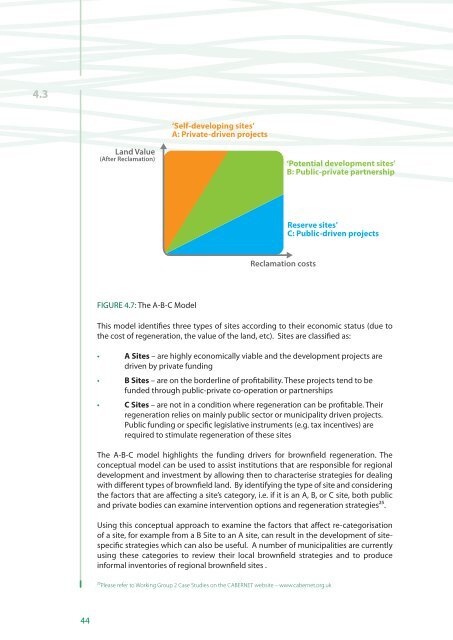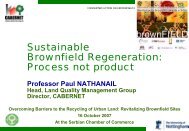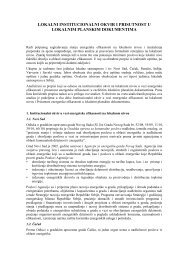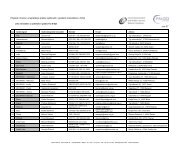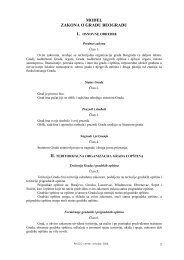Sustainable Brownfield Regeneration: CABERNET Network Report
Sustainable Brownfield Regeneration: CABERNET Network Report
Sustainable Brownfield Regeneration: CABERNET Network Report
You also want an ePaper? Increase the reach of your titles
YUMPU automatically turns print PDFs into web optimized ePapers that Google loves.
4.3‘Self-developing sites’A: Private-driven projectsLand Value(After Reclamation)‘Potential development sites’B: Public-private partnershipReserve sites’C: Public-driven projectsReclamation costsFIGURE 4.7: The A-B-C ModelThis model identifies three types of sites according to their economic status (due tothe cost of regeneration, the value of the land, etc). Sites are classified as:• A Sites – are highly economically viable and the development projects aredriven by private funding• B Sites – are on the borderline of profitability. These projects tend to befunded through public-private co-operation or partnerships• C Sites – are not in a condition where regeneration can be profitable. Theirregeneration relies on mainly public sector or municipality driven projects.Public funding or specific legislative instruments (e.g. tax incentives) arerequired to stimulate regeneration of these sitesThe A-B-C model highlights the funding drivers for brownfield regeneration. Theconceptual model can be used to assist institutions that are responsible for regionaldevelopment and investment by allowing then to characterise strategies for dealingwith different types of brownfield land. By identifying the type of site and consideringthe factors that are affecting a site’s category, i.e. if it is an A, B, or C site, both publicand private bodies can examine intervention options and regeneration strategies²⁵.Using this conceptual approach to examine the factors that affect re-categorisationof a site, for example from a B Site to an A site, can result in the development of sitespecificstrategies which can also be useful. A number of municipalities are currentlyusing these categories to review their local brownfield strategies and to produceinformal inventories of regional brownfield sites .²⁵Please refer to Working Group 2 Case Studies on the <strong>CABERNET</strong> website – www.cabernet.org.uk44


